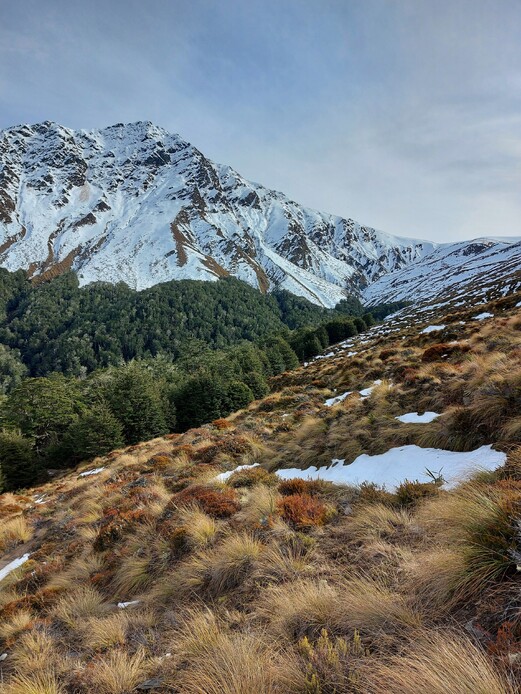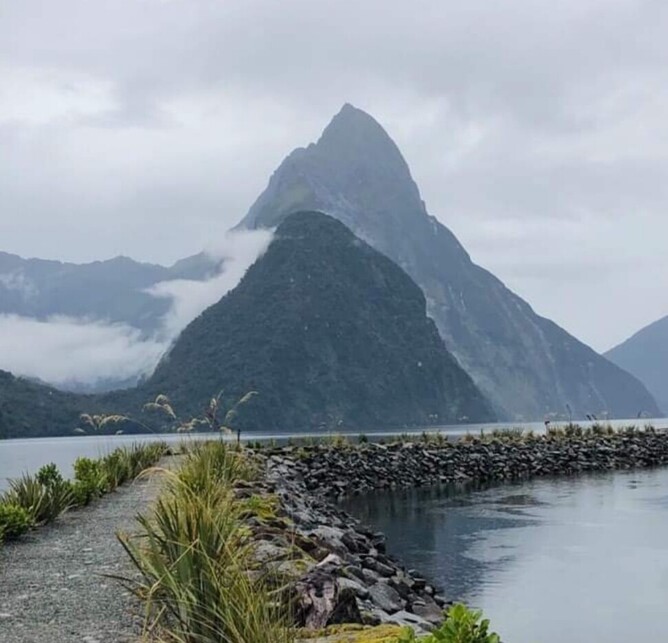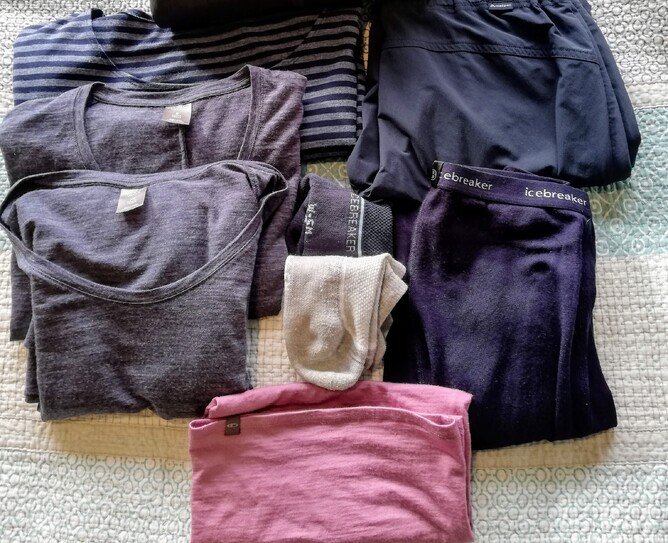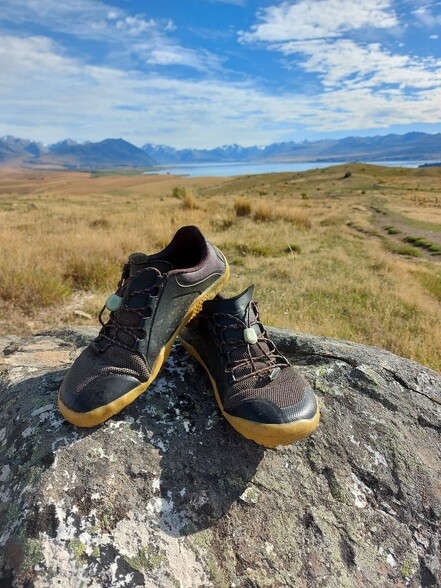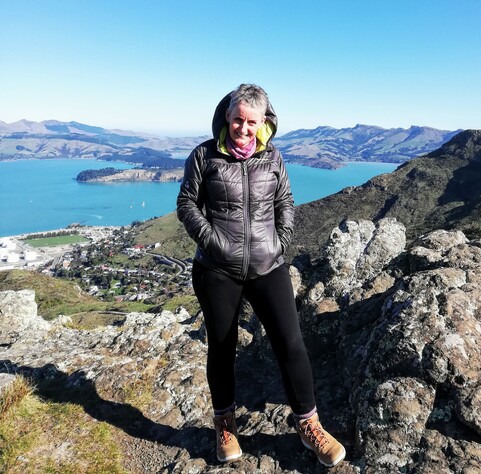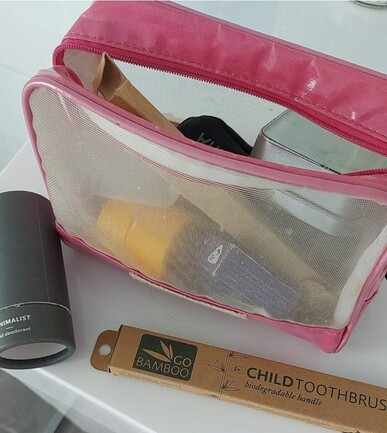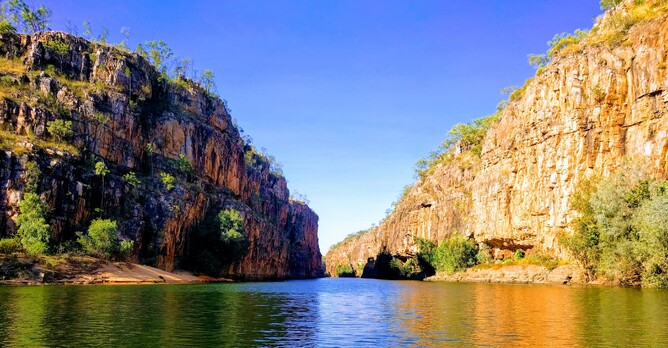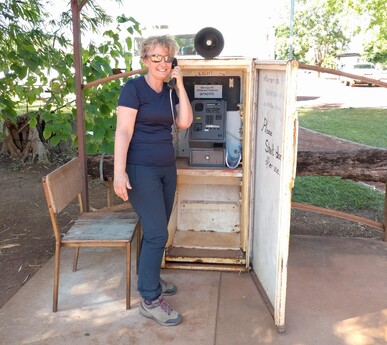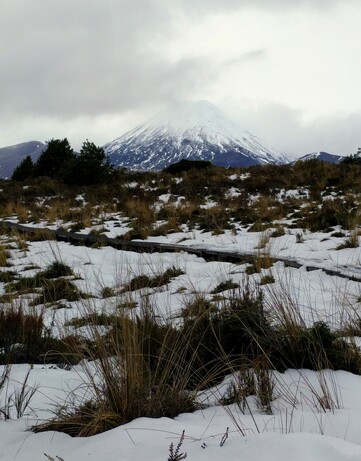Planning what you carry for a short hike or long-distance hikes takes time and consideration. Safety is the number one, non-negotiable rule that must be followed. Whether packing for a day or a week, you need to be prepared. Ultimately, what you pack and how much you pack needs to be what works best for you and the conditions you’ll be hiking in.
You need to consider the terrain, the weather forecast (and the worse-case weather scenario), the season, and how much you can cope with carrying. It’s a good idea to think about these things before you pack anything.
Back in early 2020, I was just weeks away from leaving to walk a section of the Camino de Santiago in Spain. Well, we all know what came along and stuffed up those plans! I haven't got back there yet, but my packing list is tucked away ready to be pulled out when the time comes.
In February 2023, I'm walking the Milford Track in the South Island of New Zealand. I can't wait as it is one of New Zealand's "Great Walks". So, it’s out with the hiking packing list for this multi-day trek.
(There are no affiliate links in this post, and no small commission even! Just sharing the stuff I know and love).
The New Zealand great outdoors near Queenstown.
Know what you DON'T need to pack for a hike.
An important thing to note, is what you don’t need to carry. Do your homework on where you are staying and what is provided. Our Milford Track hike is with Ultimate Hikes and I know that bedding is provided, as are towels, and food. So, there’s no need for me to pack a sleeping bag, dehydrated food, or a bulky towel. I still need to carry my own gear – but not having to worry about that other stuff is fantastic. A weight off my mind and my body!
But with my Camino list, I will carry a lightweight (660g) down sleeping bag. My towel will be a small, hand-towel sized microfibre towel, and I’ll buy food as I go through towns and villages. Your packing needs to work for you - so while I often allow to carry 10% of my weight, sometimes you need to carry more for safety reasons.
For hiking I leave behind my hairdryer, my hair straighteners, makeup, and any dressy clothing or shoes. No one will notice. Although your body will if it has to lug that heavy weight around for eight hours of hiking! Leave that extra gear back with friends, at home, in your vehicle, or at your accommodation, if they don’t mind holding it in a secure room.
The end of the Milford Track, New Zealand's most famous multi-day hike.
Do you need a hiking backpack or a daypack?
If you are hiking with a five kilo or 11-pound limit, then a daypack that has an in-built hiking frame is all you need. My day bag for instance has an 8-kilo capacity and it is a 24-litre bag. Remember, the bigger the bag, the more you’ll be tempted to fill it up.
Picking a bag that is lighter weight, like one kilo (two and a half pounds) means you’ll be able to carry more clothing.
A waterproof pack cover is always a great option, as is packing your clothes inside a plastic bag for extra protection. The last thing you want after a day of walking in the rain, is to find the contents of your pack are saturated.
When you’re preparing for your hiking trip you need to get used to carrying the bag. Really the best ways to get used to it, is to load it up with the equivalent weight of what you plan to carry and walk with it on your training hikes.
You can also borrow other people’s bags to see what works for you. I’ve lent my hiking day bag to many friends so they can feel the benefits before buying their own bag.
My favourite day bag - the Vaude Wizard 24+4L bag.
The best hiking clothes to pack for a day hike or multi-day hike.
The right gear will keep you comfortable and safe on your hike no matter what the weather conditions are. One of my favourite sayings is, “there’s no such thing as bad weather – just bad gear.”
Yes, the right gear can be expensive gear, but if you are buying good quality gear then it's an investment in your safety and health. Plus, you’re not buying heaps of it, all the time. My last sleeping bag has lasted for well over 15 years.
Each multi day or day hike packing list that you find, will have different ideas of what to pack. So, mine, is just my ideas. It works for me and will help you in deciding what you need to carry.
Layers are essential items to pack so that you can add more clothing layer when you are cold and strip those layers off when you are hot.
Layers on/layers off - always prepared for all weather!
Why merino is the best fabric for hiking.
Hands-down the best hiking fabric, in my opinion, is merino wool. It truly is a smart fabric. It’s a natural fabric. It’s odour resistant qualities means you can hang it up each night to air it, and wear again for multiple days at a time without needing to wash it.
Merino wool is thermo-regulating – meaning, it keeps you warm when it’s cold, and cool in warmer weather. It also keeps you warm even when it’s wet.
I found this out first-hand when I went on my teenagers’ school camp. Wearing merino leggings, a long-sleeved merino top, then a merino sweater and a waterproof rain jacket I walked across a freezing river. The water was up to my chest as I held onto the rope clinging on for dear life. Reaching the bank on the other side, I sat in the sun, feeling exhilarated by the cold water but remarkably still warm. I never really believed how good merino was until that point.
Merino wool even helps with sun protection. We went out on a boat one summer and I left the sunscreen back on shore. I decided to put on my long-sleeved merino tee, half expecting to cook in it. Surprisingly, I didn’t. And I also didn’t burn.
For this reason, I carry three merino tee-shirts when hiking or travelling. One will be a long-sleeved tee shirt. One for hiking, one for sleeping in, and one as a backup if the hiking one gets wet.
Merino is not limited to just being your base layer. I’ve got merino underwear, socks, trousers, a skirt, a sweater, hat, gloves, scarf and neck buff. Merino gear is an extra cost, but generally it’s well made, and lasts a long time. Sometimes it’s worth it to pay more for things that last a long time. It’s the opposite of fast fashion.
Cotton clothing should be left at home. It offers no protection from the sun, from extreme conditions, and it smells after one wear. Another outdoor saying I learnt from an outdoor instructor was – “Cotton is rotten.”
There is specialist hiking gear made from synthetic materials that are lightweight and smart. My puffer jacket is synthetic, and when I was caught in rain walking up a local mountain, I was saturated. Surprisingly, I stayed warm, and this is one of the qualities they advertise. A down jacket will keep you warm for a bit but will take forever to dry out. However, a decent rain jacket over the top would have prevented me from getting so drenched.
A puffer jacket and waterproof rain jacket and leggings are important layers to protect yourself against cold weather. In my early 20’s, I was on Outward Bound in New Zealand. We kayaked over a lake in hot midday summer temperatures, then hiked up a mountain with the kayaks, to an alpine lake. As we paddled on the lake it was sleeting. I was extremely grateful for the thermal gear I was wearing – mind you, back then it wasn’t merino, and it smelt terrible after a day's wear!
New Zealand weather is unpredictable and dangerous in remote areas and higher elevations. Our weather moves fast. What started out as a beautiful sunny day, can change in a matter of hours. Being prepared could save your life. And you can do that my packing the right gear.
The merino basics!
Hiking boots or shoes for a day or multi-day hike hike.
The best hiking boots or hiking shoes are ones that you have broken in and are comfortable and suitable for the terrain you are expecting to cover. Longer hikeswill have your feet sweating, swelling and rubbing. Merino socks help, but primarily good hiking boots will save the day.
It’s personal preference as to whether you need boots with ankle support or prefer hiking shoes.
Waterproof boots or shoes will help keep your feet dry and comfortable and less likely to develop nasty blisters on your hike, which can have you feeling miserable.
It's also worth considering whether you need to pack clip-on ice grips. We had to turn around from a walk in Queenstown recently, when an unseasonable snowfall meant the track was too icy for us to continue. And I recall with dread, day trippers, in all manner of unsuitable shoes, walking up to the Nevada Falls in Yosemite National Park. Many were slipping dangerously on the ice. We turned back quickly on this occasion too.
Pick the best hiking shoes or boots for you.
Here’s my clothing packing list for longer hikes and shorter hikes.
My packing list is pretty much the same no matter how many days I’m walking for. And I tend to follow my rule of thumb - pack three of everything – mostly.
So here it is...
- 3 merino tees (one long-sleeved one)
- 3 outer layers 1 merino sweater, 1 rain jacket, and 1 puffer jacket
- 3 bottoms I pair of merino leggings, quick drying shorts, and quick drying, water-resistant hiking trousers
- 3 pairs of merino or wool socks – one for walking, one for evening and an extra pair in case one gets wet.
- 3 pairs of underwear
Other singular clothing items include:
- A merino neck buff
- Merino gloves
- Merino hat
- Waterproof over trousers
- Hiking cap
- A pair of sunglasses
You'd never know how many layers I'm wearing on this bitterly cold Canterbury day.
What toiletries to pack for a multi-day hike.
I always pack the bare minimum of whatever I’m carrying. I calculate carefully how much I need of each product and by the time I get home there’s either nothing or very little left. You can read my nerdy blog on how to calculate how much you need to pack.
Because I’m packing light since I have to carry everything, I also carry just the absolute essentials only. But I don’t take short-cuts and leave things behind that are for safety or any emergency situation. I like to know that I have the basics covered. And I always travel with a hiking first aid kit – because there are no pharmacies in remote areas.
So, the most important items I carry in my toiletries kit are:
- Dr Bonners all-in-one bar – it’s a shampoo, detergent, laundry bar, and soap. And I only pack a 25g piece – not the whole bar.
- Moisturiser – preferably one that is good for my face and my body. Solid products are a great choice, as there’s no risk of leaking, and they take up less space and weight.
- Deodorant – crystal or solid deodorant bar – again solids over liquids.
- Sunscreen – I don’t scrimp on sunscreen. In the great outdoors, sun protection is extremely important.
- Insect repellent – there are areas in NZ that are known for man-eating mosquitoes…the Milford Track is one of them!
- Toilet paper – you don’t want to get caught off guard.
- Lip balm - I leave all other makeup at home when I'm hiking.
- Hand sanitizer – this is a new thing in my toiletries bag but is handy both for hygiene and preventing infections.
- Toothpaste tablets and toothbrush.
I also carry a first-aid kit with my medication, analgesia, allergy tablets and cream, a range of bandages and plasters. A first-aid kit is personal to your needs, so pack what you need. Pharmacies and outdoor stores have good first-aid kit options available.
I always carry an emergency blanket. When you stop hiking if someone is injured, the cold sets in very fast. In case of an emergency, the blanket traps the body heat in, and reduces the chance of hypothermia.
A minimalist toiletry bag for hiking.
Always carry water when hiking.
Always, always, always carry water: either a water bottle or a hydration pack?
Water is a safety item and should always be carried on short or long hikes. No matter if the forecast is for cold or warm weather– you must pack adequate water.
Depending on the remoteness or water quality I have sometimes carried a water filter or water purification tablets. You need to check with local information centres or guides as to what is recommended in the areas you are hiking in. Not all water sources are safe, and you’ll often find your water needs to be either carried in or treated.
Even on short day hikes, you must carry sufficient water to stay hydrated.
I do like carrying a water hydration pack, also known as a camel pack, hydration bladder, or water bladders. I like that the mouthpiece makes for easy access while walking, so you don’t need to stop and start all the time. Because it’s right there, it’s very convenient and I think I stay better hydrated.
A water bottle or two, that go in the side pockets of your bag are another option.
I wasn't too keen in getting water out of these croc infested waters - even if they were just freshwater ones!
Staying in touch when hiking.
Always let someone know where you are going and when you are expecting to return. And don't forget to let them know when you are back home or at your base, so they don't worry about you, or call emergency services.
I think everyone travels and lives with a cell phonethese days. But not all remote areas have cell service. Be sure to ask for local knowledge about cell phone reception in the areas you are going into.
A safety option are personal locator beacons (PLB). These can be lifesaving! They can be hired or bought. A PLB will ensure you are rescued quickly and get the emergency care you need asap.
Keeping in touch in the remote outback of Western Australia. No cell phone reception here.
Should you pack hiking poles?
Hiking poles are a personal preference and something I’ve become quite attached to. I enjoy the support I feel when walking downhill and having something to hold onto when going up hills. The experts say, it reduces the load on your knees, and I’m happy with anything that eases my body aches!
My hiking poles are collapsible and fit easily in my bag when not in use, but hiking poles generally need to be checked in when flying. It’s a good idea to be fitted for the poles to make sure they are the right height for you.
Hiking poles were very handy on this walk in National Park, Central North Island, NZ.
Flying to New Zealand with hiking gear? Here’s something handy to know.
In New Zealand, biosecurity is very important. The introduction of pests and diseases is monitored very closely to protect our agricultural and horticultural businesses.
Therefore, if you are coming to NZ with hiking and camping gear make sure you have cleaned it thoroughly before you arrive here. If it’s dirty, it may get sent away for cleaning, or worse, it may get confiscated.
One last thing for hiking safety.
For your next hiking trip, always check with local information centres and websites on current track conditions and forecasts, or weather warnings.
In New Zealand, the NZ Mountain Safety Council has excellent information on current conditions and advise for hikers and people enjoying the great outdoors. The website is packed with educational info and local tips.
Make your hiking trip memorable for the right reasons and not the wrong ones!
Sign up to my newsletter below and pick up my free packing list pdf. Itls packed with tips on the basics of packing light as well as a helpful checklist to keep your packing on track.
Happy hiking!
Katherine
